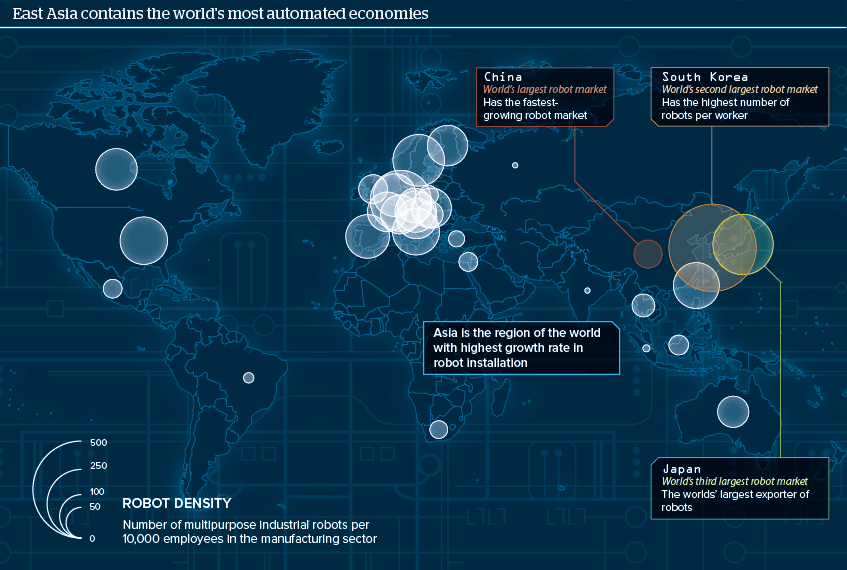Robots will be crucial to East Asia’s future
East Asia’s major economies are the world leaders in robotics in several respects
Source: International Federation of Robotics
Outlook
Demographic crises in East Asia’s large economies will encourage the adoption of robots. Declining workforces and rising labour costs (especially in China) will drive adoption of industrial and service robots. Demographic ageing will drive demand for service robots in health and elderly care.
South Korea last year introduced the world’s first ‘robot tax’ to cushion the impact of automation on workers; its neighbours are unlikely to follow in the near future: China is still funnelling generous subsidies into automation and development of its robotics sector, while Japan already faces a shortage of workers and has the most advanced demographic crisis.
Impacts
- A high degree of cultural acceptance and positive attitude towards robots will lower resistance to automation in East Asia.
- China’s robotics policies risk incentivising quantity above quality, but it will need the latter if it is to achieve its export ambitions.
- Taiwan is the regional laggard, but it too must automate if it is not to fall further behind its regional competitors.
- Robot density is falling in the automobile sector in Japan; South Korean autos may see the same trend, but adoption will rise in services.
